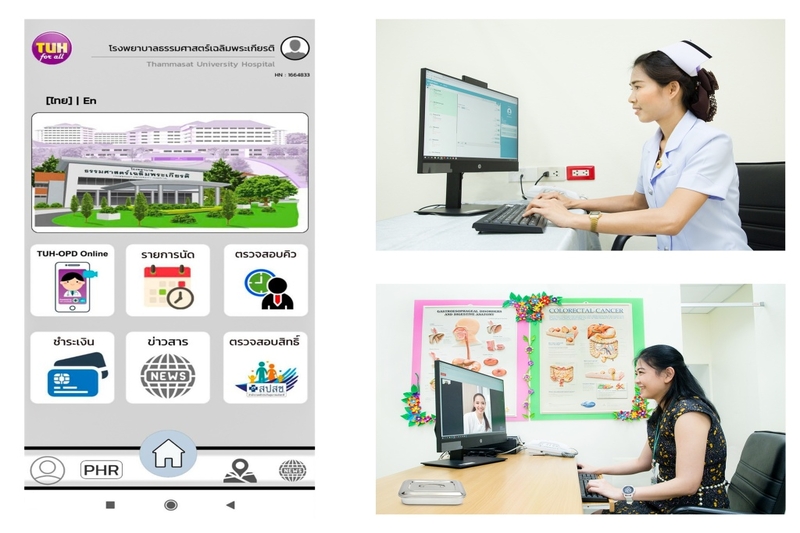
Bangkok’s Thammasat University Hospital (TUH) has announced that it is partnering Kasikornbank (KBank) to launch the TUH for All app, upgrading healthcare services and preparing Thailand for the new era of “smart hospitals”.
The innovative app allows patients to make appointments, check queue availability, and review their medical benefits and treatment history, as well as providing relevant news and information.
Its key service is TUH OPD Online, offering patients online consultations with medics without the need to visit a hospital.
With its various services – from seeing physicians to making payments and medicine delivery – the all-in-one app should help patients avoid crowded waiting rooms in line with the “new normal” pandemic environment.
The Assoc Professor and director of TUH stated that the hospital serves more than 4,000 outpatients every day, with over 800 beds available for inpatients.
The TUH OPD Online service not only helps reduce crowding at the hospital but also prevents the spread of Covid-19 by allowing social distancing, as well as saving waiting and travel time for patients.
It will be piloted at the TUH surgery department before being rolled out to 14 other departments of the hospital by the end of 2020. Its developers expect the app will reduce hospital congestion by up to 30 per cent.
The TUH OPD Online service is aimed at outpatients who need continuous monitoring for conditions such as diabetes, high blood pressure and cardiovascular diseases, or those with minor illnesses who are simply seeking medical advice.
The service can also assist patients with chronic diseases, the bedridden, and the terminally ill since it holds records of patients, their diseases and treatment history, which can be retrieved to decide the best course of treatment.
Once the patients have registered at the hospital, they will be able to access the app from their homes.
This service covers the following areas:
- Appointment with the doctor: Patients can check their doctors’ availability and receive appointment confirmation via the application.
- Consultation with doctors online via video call.
- Checking medical covers, such as the Social Security Scheme, the Universal Health Coverage (Gold Card) and the Civil Servant Medical Benefit Scheme (CSMBS).
- Payment with a credit card, or cash via the K PLUS app which should be available by July 2020.
- Getting prescriptions: The hospital will dispense medicines to patients by taxi and postal mail.
Patients of Thammasat University Hospital can download the TUH for All application from today for Android or iOS mobile operating systems.
The hospital is also introducing other new features, including a Medical Drive-Thru, a Doctor’s Appointment App for check-ins and prescriptions, injections and blood tests, and the Telepharmacy feature whereby an experienced pharmacist will offer advice on the safe and appropriate usage of prescribed drugs.
COVID-19 pushes digital transformation across Thailand
Despite wreaking havoc around the globe, COVID-19 has become a key accelerator for digital transformation among organisations who must ensure their work continues during this difficult time, OpenGov Asia previously reported.
The Executive Director of a tech training and research organisation stated that this outbreak, unlike others in the past, has affected many countries at once and is expected to carry on for a long period. This will broaden digital adoption and accelerate digital transformation.
Soon it will become more natural for businesses and individuals to embrace digital technology, such as mobile payment, e-wallets, video conferencing and collaboration tools, he said. Many will also pivot towards 5G, high-speed networks, remote working and e-learning.
During the crisis, the biggest lesson in Thailand is “communication in crisis”, which needs to be faster and accurate, he said. The government’s message needs to be simple and reach as many citizens as possible, which helps ward off public confusion over disinformation shared online.
New technology continues to be developed to fight the spread of the coronavirus. In Thailand, it is in the early stages of developing apps that locate risky areas for Covid-19 and places where masks are sold.
















